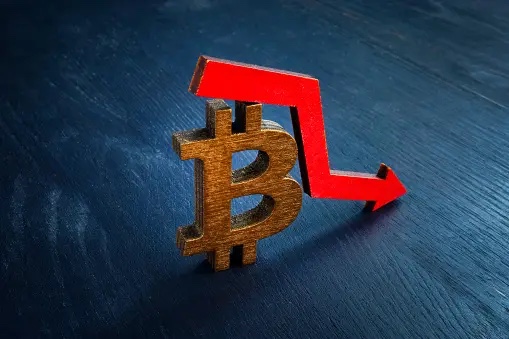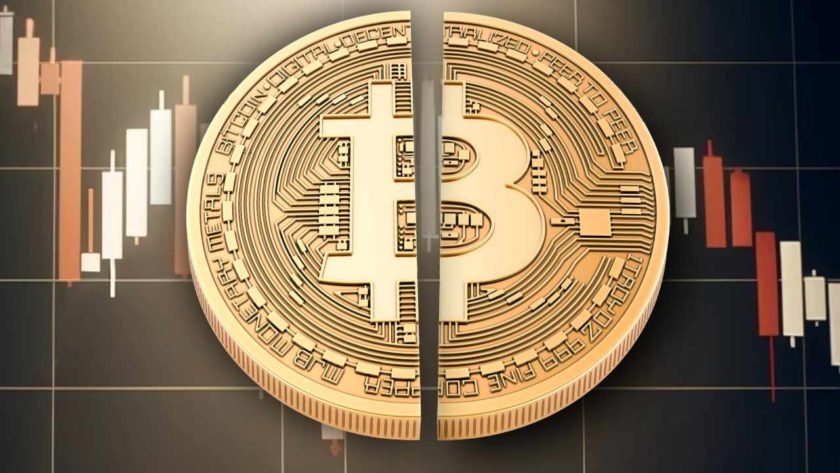In around 300 days, Bitcoin (BTC) will experience what is known as a “halving” or “halvening”. This event, which occurs in predictable four-year cycles, sees the amount of the cryptocurrency issued every ten minutes halve, this time from 12.5 coins to 6.25 coins per block.
Related Reading: Bitcoin Bears Ramp Up Selling Pressure as Weekly Close Looms; Factors & Trends
This is Bitcoin’s monetary policy, which is practically set in stone due to the consensus mechanisms that Satoshi Nakamoto implemented into his brainchild.
While the halving may seem mundane, with it being something that the mainstream and media outlets can easily gloss over, Bitcoin investors have clutched to these events as precursors to bull rallies.
Just look to the below chart. As the long-term, logarithmic chart of BTC’s price history accentuates, the halvings, marked by the black vertical lines, were what seemingly kicked off parabolic moves higher, during which the cryptocurrency market saw spurts of growth that can be defined by orders of magnitude.
Halvening centric perspective on Bitcoin price. H/T @StoicTrader_ & @MLescrauwaet pic.twitter.com/89trRlSOqd
— Tuur Demeester (@TuurDemeester) May 16, 2019
Due to this chart, which effectively implies that block reward reductions are what helps the Bitcoin price appreciate, investors have been eagerly awaiting the next halving event, slated to occur in mid-May 2020. Per a new study though, all this hype may just be unfounded.
Halvings Unlikely to Boost BTC or LTC: What?
It may seem crazy to believe, but research completed by Strix Leviathan, a Seattle-based crypto startup, and first spotted by CryptoSlate indicates that halvings may not have as much of an effect on the price of Bitcoin-based assets as the hype indicates.
The analysis of data on 32 halvings across 24 crypto assets, which includes Bitcoin and Litecoin, suggests that there is no clear evidence that crypto assets that see their emission halve “outperform the broader market in the months leading up to and following a reduction in miner rewards.”
In fact, Strix’s researchers suggest that for Bitcoin in particular, halvings actually act as a negative catalyst leading up to the event, which goes somewhat against the narrative put forth by many on Crypto Twitter.
Strix attributes the hype around these block reward reduction events to “limited sample sizes and historical data”, coupled with the idea that fundamentally, a reduction in Bitcoin and Litecoin issuance should result in some form of positive price action, barring that demand for cryptocurrencies shrinks that is.
Bitcoin May Still Appreciate
While there may be not material rallies before and after halvings, a model from a prominent cryptocurrency statistician suggests halving events should have a long-term effect on prices, the price of Bitcoin anyway.
Related Reading: Don’t Hold Your Breath, Bitcoin to Outperform Altcoins For Now
Per previous reports from NewsBTC, this model is from PlanB, a popular analyst in the Bitcoin space. He suggests that the stock-to-flow ratio (SF) of a precious commodity (gold, silver, and Bitcoin) can be related to its total market capitalization. The higher the SF ratio — meaning the lower the inflation rate that a commodity has — the higher the value of the asset should be.
This is becoming scary: using Oct instead of Dec data, Stock-to-Flow model fit improves to 99.5% R2! Model error was mainly caused by Nov2013 and Dec2017 ATH, so sampling without ATH gives less noise. Predicted #bitcoin prices increase: $100K (2020+), $1M (2024+), $10M (2028+)… pic.twitter.com/1WX6LOVxZW
— PlanB (@100trillionUSD) July 14, 2019
One of PlanB’s models, which fits Bitcoin’s valuation to a 99.5% R2, suggests that should BTC continue to follow the model to an eerie degree of accuracy, it could reach over $100,000 a pop after 2020’s halving event. The thing is, the model doesn’t predict when exactly that milestone will be breached, only that it makes sense from a statistical standpoint.
Even one of the analyst’s less optimistic models, which uses other statistics, implies that with the halving, Bitcoin’s market capitalization could $1 trillion, which would give BTC a fair value of around $55,000 a pop.
As to what will cause this nascent asset to rally to these levels, PlanB wrote that money from silver, gold, negative interest rate economies, authoritarian and capital control-rife states, billionaires looking for a quantitative easing hedge, and institutional investors will eventually flood into this space.
So what are PlanB’s models and Strix’s report saying? Well, when digested as a whole, their research suggests that Bitcoin could hit upwards of $55,000 after the halving, but not as a direct result of it and only sometime after 2020.
Featured Image from Shutterstock




